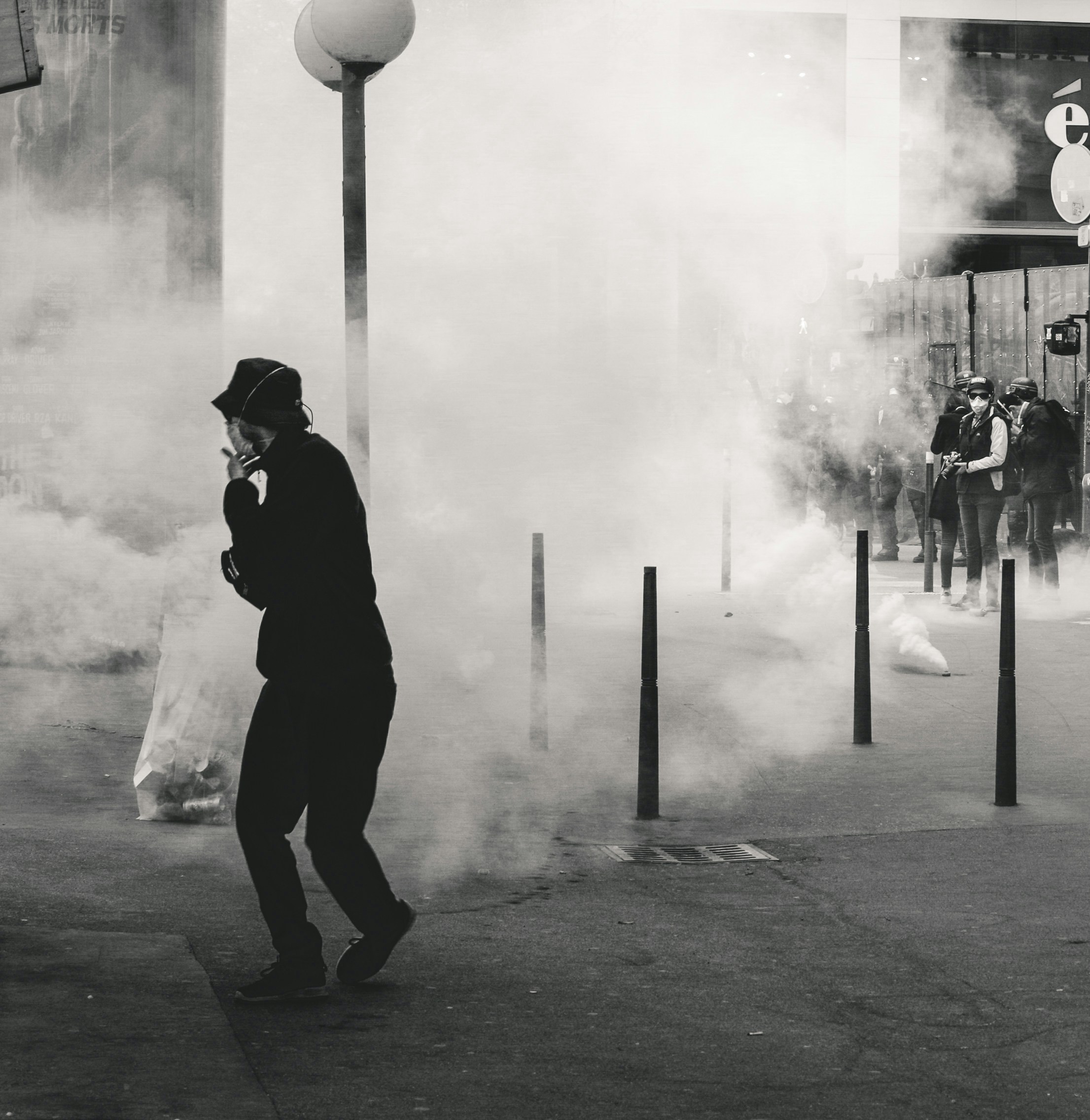Introduction to the UK Protests and Riots
In recent months, the United Kingdom has witnessed a surge in protests and riots, illustrating a significant period of civil unrest. The frequency and intensity of these events have heightened concerns among citizens and authorities alike. These protests have spanned several cities, including Manchester, Liverpool, Middlesbrough, and Blackpool, each representing unique and localized grievances while collectively highlighting broader socio-political issues.
The increase in such activities signals a palpable tension within the UK. These demonstrations, often starting as peaceful protests, have in numerous instances escalated into more intense confrontations, with some resulting in significant property damage and clashes with law enforcement. The dynamic between protestors and authorities continues to draw national attention, prompting discussions about governance, civil liberties, and the means through which citizens express dissent.
The causes fueling these protests and riots are multifaceted, ranging from economic disparities and social injustice to specific legislative decisions perceived as oppressive. The urban landscape in cities like Manchester and Liverpool has particularly felt the weight of these movements, with local communities fervently voicing their demands for change. Middlesbrough and Blackpool have seen similar upheavals, adding to the national tableau of unrest.
This overview sets the stage for understanding the specific reasons behind these protests and the varying impacts they have across different regions. By examining the underlying causes, the locations heavily involved, and the resultant societal and political effects, we gain a comprehensive view of the current state of unrest in the UK. Such insight is critical for analyzing the effectiveness of current policies and the potential pathways toward resolving these issues in a manner that addresses the core concerns of the protesting populace.
The Political Catalysts: Key Figures and Events
Understanding the recent protests and riots in the UK necessitates an examination of the political landscape and the key figures who have played pivotal roles. Among the most noteworthy is Keir Starmer, the leader of the Labour Party, whose policies and public statements have been met with both support and opposition, contributing significantly to the current climate of unrest.
Keir Starmer’s stance on issues such as economic inequality, Brexit, and social justice has been a flashpoint for contention. One notable example is his approach to Brexit; Starmer, a prominent advocate for a second referendum during the negotiations, has continued to face backlash from both Remain and Leave supporters. This divisive issue has exacerbated tensions, particularly in regions heavily influenced by Brexit outcomes.
In addition, Starmer’s policies on economic reform, particularly his plans for increased taxation on the wealthy and corporations, have sparked debate across the political spectrum. Advocates for economic equity praise these proposals, viewing them as necessary steps towards a fairer society. Conversely, critics argue that these measures could stifle economic growth and have led to protests from various business and taxpayer groups.
Another significant event fueling the unrest is the handling of the COVID-19 pandemic and subsequent recovery efforts. Public dissatisfaction with the government’s response, including the perceived inadequacies in social and financial support measures, has led to widespread protests. The contrast between the Labour Party’s proposed policies and the current governmental action has further polarized public opinion.
Furthermore, events such as the controversial policing bill, which aims to curb protests and increase police powers, have also incited significant public backlash. This legislation, perceived by many as a threat to civil liberties, has mobilized activists and ordinary citizens alike, hitting the streets in vocal opposition.
In essence, the intersection of various political decisions and the actions of key figures like Keir Starmer has set the stage for the ongoing protests and riots. By understanding these catalysts, one can gain insights into the broader socio-political dynamics driving this unrest in the UK.
Socio-Economic Factors Contributing to Unrest
The recent protests and riots in the UK are rooted in a complex web of socio-economic issues that have fueled public dissatisfaction. One of the primary contributors is the high level of unemployment. Despite various efforts to stabilize the job market, many individuals, particularly young people and those from disadvantaged backgrounds, struggle to find stable and well-paying employment. The lack of job opportunities not only impacts financial stability but also affects mental health and social cohesion.
In addition to employment challenges, the housing crisis has emerged as a critical factor exacerbating societal tensions. The disparity between housing supply and demand has led to skyrocketing rents and property prices, making affordable housing a distant dream for many. The inability to secure safe and adequate housing undermines individuals’ basic needs and fuels a sense of injustice and neglect among those affected.
Equally impactful are the cuts in public services that have been implemented over the past decade. Reductions in funding for essential services such as healthcare, education, and social welfare have led to a decline in the quality and accessibility of these services. Communities reliant on these services have been hit hardest, exacerbating feelings of marginalization and neglect. Public discontent is further amplified by the perception that the government’s austerity measures disproportionately affect the most vulnerable sections of society.
These socio-economic factors create a breeding ground for unrest, as significant portions of the population feel left behind and voiceless. The intersection of unemployment, a perilous housing market, and diminished public services highlights the systemic inequalities that many face daily. This culmination of long-standing grievances has inevitably led to widespread protests and, in extreme cases, riots, as individuals seek to vocalize their frustrations and demand change.
The Role of the Far Right and Anti-Fascist Movements
The landscape of protests and riots in the UK is significantly shaped by the involvement of far-right groups and anti-fascist movements. Prominent among these groups is the English Defence League (EDL), a far-right organization known for its controversial stance against what it perceives as the Islamization of Britain. The EDL’s agenda revolves around nationalism, immigration control, and preserving what they consider traditional British values. They have successfully mobilized support through social media campaigns, rallies, and public demonstrations, often targeting areas with significant Muslim populations or symbolism.
On the other hand, anti-fascist movements such as Antifa counter the narrative of groups like the EDL. These movements advocate against racism, xenophobia, and fascism in any form. Their primary agenda is to oppose and disrupt far-right activities to prevent the spread of hate speech and ideologies they deem threatening to a multicultural society. Antifa groups have similarly harnessed the power of digital platforms to organize counter-protests, disseminate their messages, and gather substantial participation from various demographic segments of society.
The confrontations between far-right groups and anti-fascist movements are frequently marked by violence and have contributed to a highly polarized atmosphere during protests. Clashes often erupt during demonstrations, exacerbating tensions and drawing significant media attention. These encounters not only highlight the deep ideological divides but also bring to light the potential for civil unrest when opposing sides meet.
The impact of these groups on public perception and participation in protests is profound. Their highly visible and often violent confrontations can sway public opinion, instigate fear, or embolden others to join the movement aligned with their beliefs. Moreover, the narrative promoted by the media regarding these clashes often shapes the broader public’s understanding and reaction to the protests. Public perception of the legitimacy or extremity of either side can significantly influence the general mood and response within the affected communities and beyond.
High-Profile Protests and Riots Across Key Cities
Recent months have seen significant protests and riots across several key cities in the UK, echoing the nation’s socio-political tensions. London, always a focal point for large-scale demonstrations, witnessed one of the most impactful protests on June 15, 2023. Tens of thousands gathered in Trafalgar Square and along the city’s arterial roads, rallying against social inequality and government policies. The Metropolitan Police’s response included a substantial increase in officer deployment, leading to widespread road closures, and the event ended with over 200 arrests. Property damages were extensive, particularly in central commercial districts.
Manchester also experienced notable unrest. On August 23, 2023, a protest erupted near St. Peter’s Square, quickly escalating into a full-blown riot. Protesters clashed with law enforcement, resulting in significant disruption, damaged shopfronts, and public transport halts. Greater Manchester Police reported upward of 150 arrests over several days, with the aftermath seeing a community divided and local businesses scrambling to recover.
In Liverpool, the city’s historic core was the stage of a high-profile protest on July 10, 2023, focused on employment rights and economic policy. The demonstration grew tumultuous, particularly in areas around the city center, leading to numerous confrontations between protesters and police. Reports indicated close to 100 arrests, with many participants voicing their outrage over perceived governmental neglect.
The town of Blackpool was not exempt from these occurrences; on August 16, 2023, it saw a substantial protest which rapidly escalated. The North Pier area became a hotspot of activity and conflict, causing significant damage to local infrastructure. Law enforcement agencies engaged heavily, resulting in over 80 arrests. The local community’s response has been mixed, with calls for both improved social dialogue and more effective policing.
Smaller towns such as Middlesbrough and Rotherham have also seen their share of unrest. Middlesbrough, on June 30, 2023, experienced a significant protest that led to clashes and arrests, while Rotherham’s protest on August 20, 2023, highlighted growing discontent regarding local and national socio-political issues.
The aftermath of these events has left deep marks on the cities concerned, both physically and socially. Damaged property, economic impacts on local businesses, and strained community-police relations are just some of the persisting consequences. The scale and intensity of these events signal a need for ongoing dialogue and reevaluation of policies to address the underlying causes of such widespread dissent.
Media Coverage: BBC, Sky News, and Public Perception
The recent protests and riots in the UK have been subject to extensive media coverage, with major outlets like BBC and Sky News playing pivotal roles in shaping public perception. These news organizations have been at the forefront of reporting on these events, providing real-time updates and in-depth analyses. The BBC, known for its comprehensive news delivery, has utilized its wide-reaching platforms including television, radio, and the BBC app to disseminate information swiftly. By offering various perspectives through interviews, eyewitness accounts, and expert opinions, the BBC has aimed to provide a balanced view of the unfolding situations.
Sky News, on the other hand, has leveraged its 24-hour news cycle to cover the protests extensively, often with continuous live broadcasts from hotspot locations. The channel’s use of advanced technology, such as drones and live streaming, has given viewers on-the-ground insights, further enhancing the immediacy and impact of their reporting. The framing of these events, however, has varied between these outlets. While the BBC tends to offer a more traditional, narrative-driven approach, Sky News often focuses on sensational elements, potentially affecting public perceptions differently.
In addition to traditional media, social media platforms have played a crucial role in both the reporting and organization of protests. Twitter, Facebook, and Instagram have been instrumental in the rapid dissemination of news, videos, and photos, often bypassing traditional media filters. The ease of sharing information has allowed for real-time organization and mobilization of protestors, creating a dynamic push-and-pull between media reports and real-world actions.
The interplay between media coverage and public perception is intricate, often leading to debates about bias and framing. Accusations of bias have surfaced, particularly concerning how different media outlets portray protestors and law enforcement. Such portrayals can influence public sentiment, sometimes leading to polarized opinions. Consequently, it becomes imperative for media consumers to critically evaluate the information they receive, considering multiple sources to form a well-rounded understanding of the events.
Government and Law Enforcement Response
In response to the recent protests and riots across the UK, government officials and law enforcement agencies have adopted a multi-faceted approach aimed at ensuring public safety while respecting the democratic right to protest. Prominent political leaders have vocalized their positions through official statements, emphasizing the importance of balance in maintaining order and safeguarding civil liberties.
Prime Minister’s office issued a statement underscoring the significance of peaceful protest as a cornerstone of democratic society, while condemning acts of violence and vandalism. The Home Secretary echoed these sentiments, indicating that while the right to demonstrate will always be protected, unlawful activities will not be tolerated. These pronouncements have set the tone for other governmental agencies to follow.
In light of these protests, several new legislative measures have been proposed to address both public safety and the concerns raised by demonstrators. Notably, a bill has been introduced aiming to provide law enforcement with more robust tools to manage large gatherings and prevent escalation of violence. This legislation seeks to grant enhanced powers for dispersal orders and temporary curfews in identified hotspots, while simultaneously ensuring that the fundamental rights of peaceful protesters are preserved.
Local authorities have also actively participated in shaping the response to the civil unrest. Various city councils have engaged in community dialogue to better understand the underlying issues prompting these protests. They have facilitated town hall meetings and established committees to work with protest organizers and community leaders, aiming to find common ground and remediate the root causes of the discontent.
From a law enforcement perspective, police forces across the UK have adapted their strategies to address the dynamic nature of the protests. Tactics such as strategic de-escalation and the deployment of liaison officers have been employed to foster a cooperative atmosphere between demonstrators and police. However, measures such as kettling and mass arrests have also been employed in situations where protests turned violent, igniting debates over the proportionality and appropriateness of such actions.
Ultimately, the delicate task for both the government and law enforcement remains: striking a balance between maintaining public order and respecting the inalienable right to peaceful assembly. Their ongoing efforts strive to navigate these complex challenges, aiming to restore community trust and maintain societal stability amidst these turbulent times.
What Lies Ahead: Potential Outcomes and Long-Term Effects
The recent protests and riots in the UK have undeniably marked a significant period in the nation’s history, stirring widespread debate and concern. As we look to the future, it’s crucial to reflect on the potential outcomes and long-term effects that these events may impose on UK society, politics, and the economy. One of the primary areas of focus will be the prospects for resolution and the necessary measures to address the underlying causes of the unrest.
Socially, these protests have exposed deep-seated frustrations and inequalities within the British populace. A pivotal outcome could be a heightened awareness and acknowledgment of these issues, prompting a stronger push for social reforms. Possible changes might include more inclusive policies and community-driven initiatives aimed at bridging societal gaps. The unrest has brought attention to neglected areas, which could lead to increased investment in education, healthcare, and public services, especially in marginalized communities.
Politically, the disturbances may lead to significant shifts. The government’s handling of the situation is under intense scrutiny, and public trust in political institutions could be at stake. These events may catalyze political movements and activism, encouraging a new wave of engagement and possibly resulting in changes in leadership or policy directions. Policymakers might need to demonstrate a more proactive stance in addressing citizens’ grievances, which could also trigger debates on law enforcement reforms and the protection of civil liberties.
Economically, the impact of the riots is multifaceted. Immediate repercussions include the cost of damage to property and infrastructure, as well as the potential decline in business confidence. However, in the long term, the protests could lead to economic reassessment and realignment. This might involve revisiting fiscal policies, enhancing support for struggling sectors, and incentivizing job creation in areas most affected by the unrest. Addressing economic disparities could be pivotal in quelling future unrest and fostering a more resilient economy.
While there are signs of de-escalation, the root causes of these protests—social inequality, political disenfranchisement, and economic disparity—require substantial and sustained efforts to resolve. Addressing these issues comprehensively will be key to preventing future unrest and building a more equitable and prosperous UK. Ultimately, the nation’s response to these challenges will shape its trajectory for years to come, influencing the social, political, and economic landscape in profound ways.



